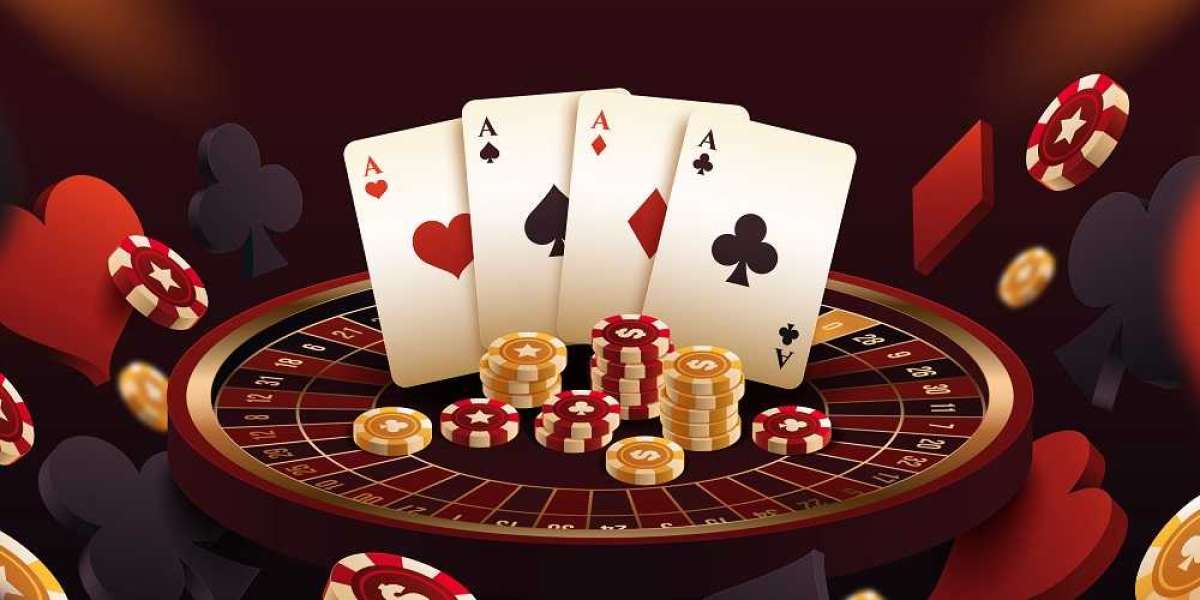Walk into any major
casino, and you'll find a vast array of gaming options. This raises a fundamental question: how does poker differ from other casino games? The majority of casino offerings are games of chance with a built-in mathematical edge for the casino.
This makes it a unique and enduringly compelling game, one where long-term success is earned through study and practice, not just wished for with a lucky charm. While poker is found within the walls of a casino, it is fundamentally different from the house-banked games surrounding it.
Accept that the house always has an edge and you are paying for the thrill of the game. Treat Gambling as an Entertainment Expense
The most important rule is to view money spent on gambling as a cost for entertainment, just like buying a movie ticket or going to a concert.
The Casino Environment
Land-based and online casinos use sensory elements to create an immersive atmosphere. The distinct sounds of jackpots, vibrant lights, and a layout that obscures the outside world are all intentional design choices.
This era cemented the casino's association with luxury, glamour, and sophistication. Elegance and Exclusivity
In the 19th century, the casino concept flourished in spa towns across Europe, such as Baden-Baden in Germany and Spa in Belgium.
Never chase your losses. Create and Follow a Budget
Before you start playing, decide on a specific amount of money you are willing to lose and can comfortably afford. Only gamble with discretionary income, not money needed for rent, bills, or other essentials. Once that money is gone, stop playing.
This design philosophy also famously incorporates two key absences:
No Clocks: By removing time-telling devices, casinos encourage players to lose track of how long they've been playing. The goal is to create a state of "flow," where the player is fully absorbed in the activity of gambling without external distractions. No Windows: This creates a consistent environment, no matter the time of day.
Gambling in the Wild West
While Europe had its grand casinos, gambling in 19th-century America was a much rougher affair. This period was characterized by a lawless, gritty, and often dangerous gambling culture, a stark contrast to the refinement of Monte Carlo.
The intricate and often garish carpet patterns are also deliberate; they are designed to be stimulating and hide wear and tear,
casino while also subtly guiding foot traffic. Color psychology also plays a significant role.
Experiencing a near win triggers a similar neurological response to an actual win, creating frustration but also a strong desire to try again. The "near miss" effect is another potent psychological tool.
Being secretive about your gaming habits. Wagering funds meant for essential expenses. Gambling is no longer fun and feels like a necessity. Going into debt because of gambling. There are numerous professional organizations dedicated to providing assistance. Neglecting work, school, or family responsibilities to gamble. Play smart, stay safe, and keep it fun. If you recognize any of these signs in yourself or someone you know, help is available.
These deals are designed to attract players, yet it's vital to read the fine print. This guide will help you demystify the most common types of casino bonuses. One of the biggest draws of online casinos is their generous bonus offers.
The mid-20th century saw Vegas transform into the entertainment capital of the world. The casino was no longer just a place to gamble; it became a "resort," offering shows, gourmet dining, and luxury hotels.
Building a Gambling Mecca
The history of the modern casino is inextricably linked to Las Vegas. Early casinos like the Flamingo, famously backed by mobster Bugsy Siegel, brought Hollywood glamour and entertainment to the desert.
Popularized by casino designer Bill Friedman, this approach involves creating a floor plan with curving pathways, low ceilings, and strategically placed gaming machines that break up sightlines. The Labyrinth Design: Losing Track of Time and Space
One of the most famous principles of casino design is the "labyrinth" or "maze" layout.
Its opulent Belle Époque architecture and stunning seaside location made it the playground for Europe's rich and famous. The most iconic casino of this period, and perhaps of all time, is the Monte Carlo Casino in Monaco.
The Evolution of Casino Layouts
In recent years, some newer casinos, particularly in Las Vegas, have begun to move away from the traditional Friedman model. This newer approach aims to make patrons feel elegant, relaxed, and sophisticated, rather than trapped.
The next time you walk into a casino, take a moment to look around. From the winding paths of the Bellagio to the sunlit atriums of the Wynn, casino architecture is a fascinating field where art, psychology, and commerce intersect.
This ongoing digital transformation, now centered on mobile devices, continues to redefine what a casino is and where it can be experienced. The Digital Revolution: The Casino Enters the Home
The latest chapter in casino history began in the mid-1990s with the advent of the internet.
 Интимная жизнь.
Интимная жизнь.
 BET9JA promo code: YOHAIG - ₦100000 Welcome Bonus - GET 170 Multiple Boost Bonus
BET9JA promo code: YOHAIG - ₦100000 Welcome Bonus - GET 170 Multiple Boost Bonus
 Everything You Need To Learn About Coffee Machine Delonghi
By coffeee5176
Everything You Need To Learn About Coffee Machine Delonghi
By coffeee5176 Transforme Seu Hotel com Roupões Sustentáveis: Dicas Práticas para uma Escolha Ecológica
Transforme Seu Hotel com Roupões Sustentáveis: Dicas Práticas para uma Escolha Ecológica
 Vestido Kukie Vermelho: O Toque de Elegância que Você Precisa no Seu Guarda-Roupa
Vestido Kukie Vermelho: O Toque de Elegância que Você Precisa no Seu Guarda-Roupa




